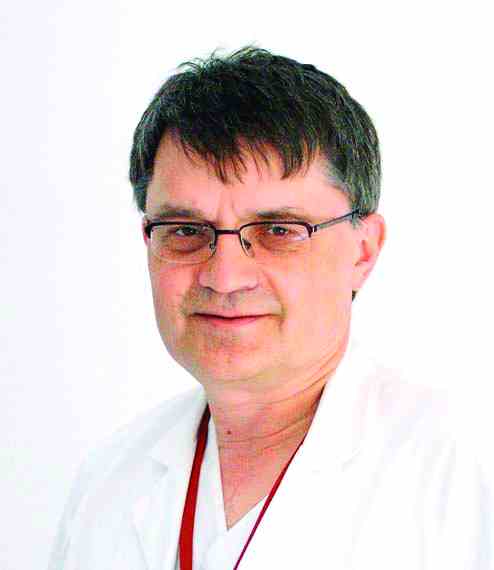User login
A session on Friday morning entitled “Introduction to Vascular Malformations” will consider the classification, imaging, and surgical approaches to the congenital anomalies that occur in veins, lymph nodes, both, or in arteries and veins. The session will be co-moderated by Dr. Krassi Ivancev, University Hospital Hamburg-Eppendorf, Hamburg, Germany, and Dr. Furuzan Numan, Istanbul University Cerrahpasa Medical Faculty, Istanbul, Turkey.
Vascular malformations are present at birth and become apparent sometime later in life. Surgery often does not completely remove a malformation, which can lead to recurrence.
“Vascular malformations constitute the most difficult challenge in the world of vascular medicine and as a group are the most challenging of all vascular disease entities. Compounding their inherent difficulty in clinical management is the extreme rarity of these complex vascular lesions. Most malformations are in surgically difficult anatomies and many are impossible to resect, save by amputation,” said Dr. Ivancev.
Since vascular anomalies represent a spectrum of disorders, incorrect identification and misdiagnosis can occur, which can lead clinicians in the wrong direction when treating patients. As will be discussed by Dr. Leo J. Schultze Kool of Radboud University Nijmegen in the Netherlands, the International Society for the Study of Vascular Anomalies (ISSVA) classification system stratifies vascular lesions into vascular malformations and proliferative vascular lesions.
Dr. Wayne Yakes of the Yakes Vascular Malformation Center, will discuss an arteriovenous malformation (AVM) classification system he pioneered that defines all the angioarchitectures and their associated treatment strategies. Dr. Yakes will also talk about the therapeutic implications of the AVM classification when confronting challenging cases.
Diagnostic classification of vascular anomalies based on their visual appearance has been an area of innovation and invention in recent years. Imaging of congenital vascular malformations using magnetic resonance and using this information as a guide to treatment will be addressed by Dr. R. Sean Pakbaz of Scripps Healthcare.
Embolization techniques began to be used about 30 years ago, and have proven to be effective. Dr. James Donaldson of Northwestern University Feinberg School of Medicine will discuss endovascular access and embolization in neonates and children.
Session 92: Introduction to Vascular Malformations
Friday 6:45 a.m. – 7:30 a.m.
Gramercy Suites East and West, 2nd Floor
A session on Friday morning entitled “Introduction to Vascular Malformations” will consider the classification, imaging, and surgical approaches to the congenital anomalies that occur in veins, lymph nodes, both, or in arteries and veins. The session will be co-moderated by Dr. Krassi Ivancev, University Hospital Hamburg-Eppendorf, Hamburg, Germany, and Dr. Furuzan Numan, Istanbul University Cerrahpasa Medical Faculty, Istanbul, Turkey.
Vascular malformations are present at birth and become apparent sometime later in life. Surgery often does not completely remove a malformation, which can lead to recurrence.
“Vascular malformations constitute the most difficult challenge in the world of vascular medicine and as a group are the most challenging of all vascular disease entities. Compounding their inherent difficulty in clinical management is the extreme rarity of these complex vascular lesions. Most malformations are in surgically difficult anatomies and many are impossible to resect, save by amputation,” said Dr. Ivancev.
Since vascular anomalies represent a spectrum of disorders, incorrect identification and misdiagnosis can occur, which can lead clinicians in the wrong direction when treating patients. As will be discussed by Dr. Leo J. Schultze Kool of Radboud University Nijmegen in the Netherlands, the International Society for the Study of Vascular Anomalies (ISSVA) classification system stratifies vascular lesions into vascular malformations and proliferative vascular lesions.
Dr. Wayne Yakes of the Yakes Vascular Malformation Center, will discuss an arteriovenous malformation (AVM) classification system he pioneered that defines all the angioarchitectures and their associated treatment strategies. Dr. Yakes will also talk about the therapeutic implications of the AVM classification when confronting challenging cases.
Diagnostic classification of vascular anomalies based on their visual appearance has been an area of innovation and invention in recent years. Imaging of congenital vascular malformations using magnetic resonance and using this information as a guide to treatment will be addressed by Dr. R. Sean Pakbaz of Scripps Healthcare.
Embolization techniques began to be used about 30 years ago, and have proven to be effective. Dr. James Donaldson of Northwestern University Feinberg School of Medicine will discuss endovascular access and embolization in neonates and children.
Session 92: Introduction to Vascular Malformations
Friday 6:45 a.m. – 7:30 a.m.
Gramercy Suites East and West, 2nd Floor
A session on Friday morning entitled “Introduction to Vascular Malformations” will consider the classification, imaging, and surgical approaches to the congenital anomalies that occur in veins, lymph nodes, both, or in arteries and veins. The session will be co-moderated by Dr. Krassi Ivancev, University Hospital Hamburg-Eppendorf, Hamburg, Germany, and Dr. Furuzan Numan, Istanbul University Cerrahpasa Medical Faculty, Istanbul, Turkey.
Vascular malformations are present at birth and become apparent sometime later in life. Surgery often does not completely remove a malformation, which can lead to recurrence.
“Vascular malformations constitute the most difficult challenge in the world of vascular medicine and as a group are the most challenging of all vascular disease entities. Compounding their inherent difficulty in clinical management is the extreme rarity of these complex vascular lesions. Most malformations are in surgically difficult anatomies and many are impossible to resect, save by amputation,” said Dr. Ivancev.
Since vascular anomalies represent a spectrum of disorders, incorrect identification and misdiagnosis can occur, which can lead clinicians in the wrong direction when treating patients. As will be discussed by Dr. Leo J. Schultze Kool of Radboud University Nijmegen in the Netherlands, the International Society for the Study of Vascular Anomalies (ISSVA) classification system stratifies vascular lesions into vascular malformations and proliferative vascular lesions.
Dr. Wayne Yakes of the Yakes Vascular Malformation Center, will discuss an arteriovenous malformation (AVM) classification system he pioneered that defines all the angioarchitectures and their associated treatment strategies. Dr. Yakes will also talk about the therapeutic implications of the AVM classification when confronting challenging cases.
Diagnostic classification of vascular anomalies based on their visual appearance has been an area of innovation and invention in recent years. Imaging of congenital vascular malformations using magnetic resonance and using this information as a guide to treatment will be addressed by Dr. R. Sean Pakbaz of Scripps Healthcare.
Embolization techniques began to be used about 30 years ago, and have proven to be effective. Dr. James Donaldson of Northwestern University Feinberg School of Medicine will discuss endovascular access and embolization in neonates and children.
Session 92: Introduction to Vascular Malformations
Friday 6:45 a.m. – 7:30 a.m.
Gramercy Suites East and West, 2nd Floor

